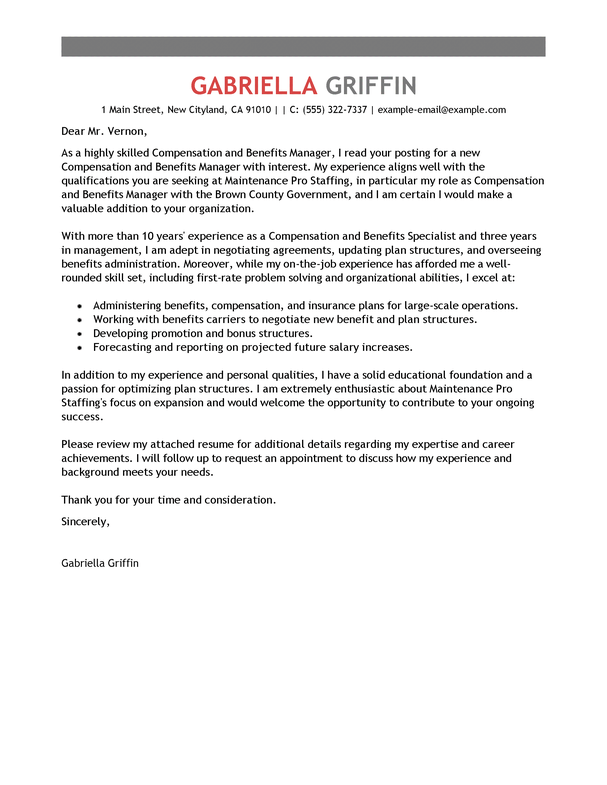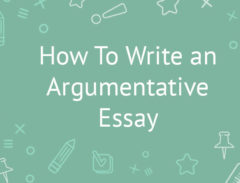Best Compensation and Benefits Cover Letter Examples
Published: Wednesday 17th of May 2017; Words Count: 1950
Having a strong cover letter can edge you to the head of the jobseeker pack. In our compensation and benefits cover letter example, you’ll find vital tips and useful information to guide you when writing your own letter. A few dos and don’ts are in order when composing your version to get a hiring manager’s attention.
- Don’t focus on how the company and the position can benefit you. Remember, it’s your job to sell yourself to the recruiter, so focus on how your blend of skills and experience can benefit the organization. Our jobseeker has done just that, highlighting her background in compensation and benefits management.
- Do feel free to include a story in your letter. The personal touch makes you come to life as a candidate, so pick a unique narrative that’s relevant to what attracted you to the company.
- Do custom-tailor your letter. Crafting an individualized missive shows your sincere care and interest.
- Don’t feel limited to one format. While the traditional version written in three to five paragraphs is a good place to start, you can include bullet points or creatively tell a story to attract the recruiter’s interest.
Compensation And Benefits Advice
Compensation and benefits managers are in charge of determining how, and how much, employees get paid. It’s an important position in virtually every type of company, and you’ll need a strong cover letter to get hired. The compensation and benefits cover letter examples below will give you an idea of the kind of experience you should include. Just click on any of these cover letter examples to take the next step toward a rewarding career.

Cover Letter Tips for Compensation And Benefits
Finding jobs as a Compensation And Benefits requires savvy job hunting skills. These pointers can help you reach your career goals in today’s job market.
1. Network as often as possible. Prepare a two-minute Âelevator speech” that describes who you are, what you do and how you can benefit a potential employer.
2. Expand your job search platforms. For instance, search and apply for positions on a variety of online job banks.
3. Consider temporary work. If you are unemployed, securing a job can take months or longer. In the meantime, take a temporary job that will sustain you financially and keep your skills sharp.
4. Do your research. Specifically, visit the company websites and learn as much as you can about products, services, operations and culture.
5. Develop the right mindset. Keep in mind that finding your ideal job does take time and perseverance. So, approach your job hunt with patience, confidence and a determination to get the kind of work you desire.

Compensation And Benefits Job Seeking Tips
Your cover letter is a critical part of the process when you are looking for jobs as a Compensation And Benefits. Follow the tips below to ensure it is professional and well put together.
1. Keep in mind the cover letter doesn’t get you a job. Its primary purpose is to get you an interview. So make sure it showcases the skill set and qualifications employers expect.
2. The submission methods and requirements vary among employers. Prepare your cover letter in multiple formats. For example, have a print copy, a PDF file and a plain text version. This way you will have all the bases covered, from hand delivering or mailing your cover letter to sending email or electronic submissions.
3. The most important elements you need in your cover letter are known as FAKTSA. This stands for focus, appearance, keywords, transferrable skills and accomplishments.
4. Hire a professional cover letter writer, if needed. If you are not comfortable with creating your own cover letter, employ the services of a writer who has expertise in this area. This ensures it will be written in a way that showcases your experience and qualifications in the best possible light.
5. Avoid putting non-essential information on the cover letter. For instance, don’t include your height weight, age, date of birth religion, political affiliation or picture of yourself.





